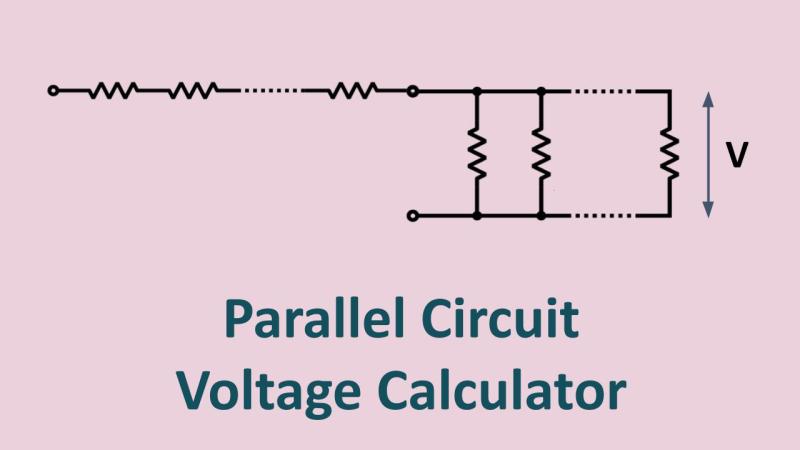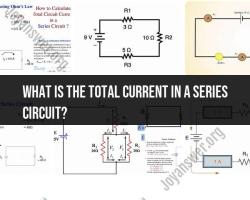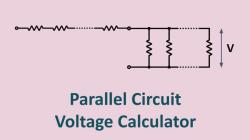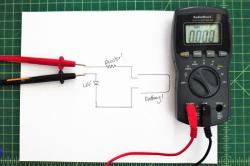How do you calculate the current in a series circuit?
In a series circuit, the current remains constant throughout the circuit. Therefore, the current at any point in a series circuit is the same as the current at any other point. To calculate the current in a series circuit, you can use Ohm's Law, which states:
where:
- is the current in amperes (A),
- is the voltage across the circuit in volts (V),
- is the total resistance of the circuit in ohms (Ω).
For a series circuit, the total resistance () is simply the sum of the individual resistances ().
So, the formula for calculating the current in a series circuit becomes:
Example:
Let's say you have a series circuit with three resistors:
- ,
- ,
- ,
- and a voltage source .
Calculate Total Resistance:
Use Ohm's Law to Find Current:
So, in this example, the current flowing through the series circuit is 1 ampere.
Remember that in a series circuit, the current is the same at any point in the circuit, and it is determined by the total resistance and the applied voltage.
What factors affect the calculation of current in a series circuit?
The calculation of current in a series circuit is primarily affected by two fundamental factors:
1. Voltage (V): Voltage is the potential difference that pushes the current through the circuit. It is analogous to the pressure that pushes water through a hose. The higher the voltage, the greater the force pushing the electrons, and consequently, the higher the current.
2. Resistance (R): Resistance is the opposition to the flow of current in the circuit. It is analogous to the friction that slows down the flow of water in a hose. The higher the resistance, the more difficult it is for electrons to flow, and consequently, the lower the current.
The relationship between these factors is governed by Ohm's Law:
I = V / R
where:
- I is the current flowing through the circuit (measured in amperes)
- V is the voltage across the circuit (measured in volts)
- R is the total resistance of the circuit (measured in ohms)
Additional factors that can indirectly affect the current in a series circuit include:
- Temperature: The resistance of most materials increases with temperature. Therefore, a rise in temperature can lead to a decrease in current.
- Material properties: Different materials have different resistivity, which affects their resistance. Using materials with lower resistivity allows for higher current flow.
- Length and cross-sectional area of conductors: The resistance of a conductor is directly proportional to its length and inversely proportional to the square of its cross-sectional area. Using shorter conductors with larger cross-sections can reduce resistance and allow for higher current flow.
- Number of components: In a series circuit, the total resistance increases with the number of components. This increased resistance leads to a decrease in current.
It is important to note that the factors listed above can interact and influence each other. For example, a change in temperature can affect both voltage and resistance, ultimately impacting the current flow in the circuit.
Therefore, a comprehensive understanding of all factors involved is crucial for accurately calculating current in a series circuit.




